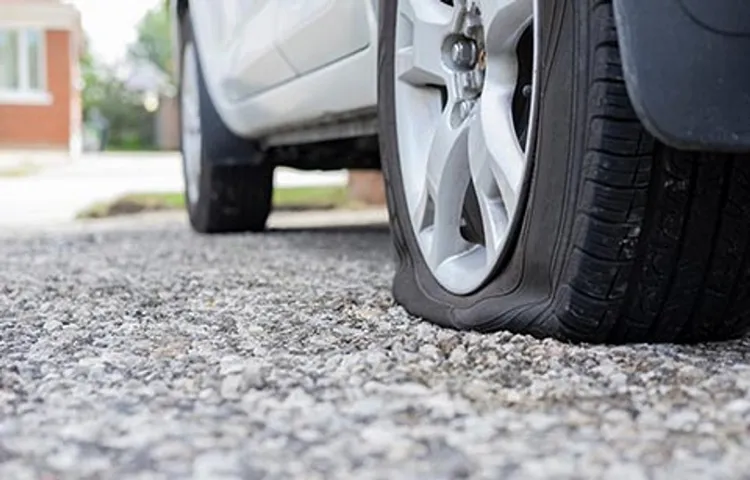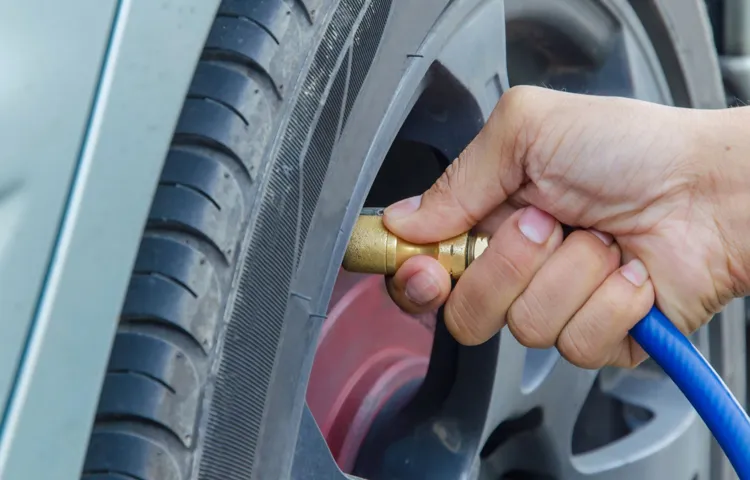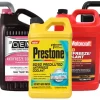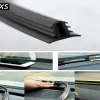Have you ever experienced the frustration of trying to inflate a tire but no matter how hard you pump, no air seems to be going in? It’s a common problem that can leave you feeling puzzled and annoyed, especially when you’re in a hurry to get somewhere. So, why isn’t air going into your tire? There are several reasons why this might be happening, and it’s important to understand the root cause so you can fix the problem quickly and get back on the road. Let’s explore some of the common culprits and what you can do to solve them.
Table of Contents
Check the Valve Stem
“Why isn’t air going into my tire?” is a question that many vehicle owners ask themselves when experiencing tire inflation issues. One possible cause of this problem is a faulty valve stem. Valve stems are essential components that help control the flow of air into and out of tires.
If the valve stem is loose, damaged, or worn out, it may prevent air from entering the tire when filling it up. To check the valve stem, remove the valve cap and use a pressure gauge to see if there’s air pressure within the tire. If there is no pressure or very little, chances are the valve stem needs replacement.
Replacing the valve stem is a quick and easy process that most people can do on their own. It’s important to remember that a proper inflation level is essential for tire safety and overall vehicle performance. So, if you’re experiencing tire inflation issues, don’t hesitate to check the valve stem and get it fixed if necessary.
Inspect the Valve Stem
When you are inspecting your valve stem, the first thing you should check is the condition of the rubber valve stem cap. If it appears to be cracked or missing, it is recommended that you replace it immediately to prevent any debris or moisture from entering the valve system. The next thing you should check is the valve stem itself.
Look for any visible signs of damage, such as bends or cracks, and check that the valve stem isn’t overly loose or tight. If you see any of these symptoms, it could be indicative of a bigger problem, and it might be time to replace the entire valve system. Remember that neglecting to check your valve system regularly can negatively affect your vehicle’s performance and safety.

Check for Damage or Debris
Checking for damage or debris is important in ensuring the safety and performance of your vehicle. One specific area that requires your attention is the valve stem. The valve stem is responsible for holding the air pressure inside the tire.
It is vital that the valve stem is not damaged or obstructed, as this can cause loss of pressure or even a blowout while driving. When inspecting the valve stem, look for any signs of cracks, cuts, or punctures. If the valve stem is damaged, it should be replaced immediately.
Additionally, check for debris such as dirt, rocks, or twigs around the valve stem. Such debris can also cause damage or blockage, so it should be removed before driving. By taking regular care and inspections of your vehicle’s valve stem, you can ensure the safety and stability of your vehicle on the road.
Check the Air Pump
Are you having trouble inflating your tire? One possible reason could be a malfunctioning air pump. Your tire may not be receiving the proper amount of air due to a faulty or broken air pump. Before attempting to refill your tire, check the air pump to make sure it’s working properly.
Start by ensuring that it’s properly plugged in and that there’s no damage to the cord or outlet. If the pump still doesn’t work, try checking the fuse or contacting a professional to take a closer look. Remember, proper inflation is key to maintaining the lifespan of your tires and ensuring a safe ride.
So, don’t neglect this important step in tire maintenance!
Ensure Proper Connection
When it comes to maintaining your aquarium, checking the air pump is crucial to ensure proper connection. The air pump is responsible for circulating air in the water, which is essential for the survival of your fish and plants. To check the air pump, first, make sure it is properly connected to your aquarium.
Check the tubing for any cracks or leaks that may be hindering its performance. A malfunctioning air pump can be detrimental to your aquarium, causing the water to become stagnant and your fish and plants to suffer as a result. It’s important to replace or repair the air pump as soon as possible to guarantee optimal performance and a healthy environment for your aquatic pets.
By regularly checking the air pump, you’ll be able to prevent any potential complications before they arise and enjoy a flourishing aquatic habitat.
Check for Damage or Malfunction
When it comes to maintaining your air pump, it’s important to check for any signs of damage or malfunction. This is especially crucial when it comes to the air pump itself. The air pump is the heart of your aquarium filtration system, responsible for delivering oxygen to your fish and creating circulation in the tank.
Start by checking the power cord for any frayed wires or damage. Next, listen for any unusual sounds like grinding or clicking that could signal a malfunctioning motor. You can also physically inspect the air pump for any cracks or leaks in the casing.
If you notice any issues, it’s best to replace the air pump as soon as possible to prevent any further damage. By regularly checking your air pump, you can ensure that your aquarium ecosystem remains healthy and thriving.
Check the Tire
If you’re having trouble inflating your tires, the first thing to check is whether your valve stem is functioning properly. The valve stem is the small, black rubber component that protrudes from the wheel. If the valve stem isn’t working properly, it may need to be replaced.
Additionally, the valve core may have been removed, which is preventing air from entering the tire. You can check if the valve core is where it should be by unscrewing the cap on the valve stem and using a small tool to push down on the spring-loaded pin in the center. If this doesn’t help, it’s possible that the tire or rim is damaged, causing the air to leak out.
In this case, it’s best to take your tire to a professional to have it inspected and repaired. Overall, having a properly functioning valve stem is crucial to maintaining the air pressure in your tires, so it’s important to take care of any issues promptly.
Inspect for Damage or Wear
When it comes to ensuring your car is safe on the road, one of the most important things to check regularly is the condition of your tires. Before heading out on a long journey, take a few moments to inspect your tires for any signs of damage or wear. Look for cuts in the sidewall, punctures, or uneven wear on the tread.
These can all be warning signs that your tires need to be replaced before they become an issue on the road. It’s also important to ensure your tires are properly inflated, as over-inflation or under-inflation can cause major problems while driving. By being proactive about your tire maintenance, you can help prevent accidents and ensure your car runs smoothly.
So, the next time you’re getting ready to hit the road, take a moment to check your tires and make sure they’re in good condition. Your safety (and the safety of others on the road) is worth the few extra minutes it takes to do a quick inspection.
Check for Proper Inflation Level
One of the most important things you can do for your vehicle’s safety is to ensure that your tires are properly inflated. Underinflated tires can be a serious hazard, decreasing your car’s handling and fuel efficiency and increasing the risk of a blowout. To check your tire pressure, use a tire pressure gauge or visit your local garage.
Make sure to check your tires when they are cold, before driving on them, and inflate them to the recommended pressure listed in your owner’s manual or on the tire pressure placard located inside your doorjamb, not the maximum pressure listed on the tire’s sidewall. Regularly checking your tire pressure can help improve your car’s performance and save you money in the long run.
Check for Other Factors
If you’re having trouble getting air into your tire, the first thing you should check is whether the valve stem is hooked up properly to the tire and the air pump. But if that doesn’t solve your problem, there could be other factors at play. For example, the tire might be damaged or punctured, causing a leak.
Alternatively, the air pump could be faulty and not generating enough pressure to inflate the tire. Another possibility is that the air valve itself is clogged or obstructed, preventing air from flowing in. It’s always a good idea to check for these other factors if you’re having trouble inflating your tire, as they could be the root cause of the problem.
Temperature and Altitude Effects
When it comes to monitoring temperature and altitude, it’s important to be aware of other factors that could influence your data. For example, environmental factors like humidity and air pressure can have a significant impact on the accuracy of temperature readings. Similarly, changes in altitude can affect the performance of altitude sensors, leading to inaccurate measurements.
It’s important to take these factors into account when conducting experiments or collecting data, as failing to do so can result in misleading or incorrect findings. Additionally, be sure to calibrate your equipment regularly to ensure that your measurements are as accurate as possible. By being aware of other factors that can influence temperature and altitude measurements, you can avoid potential errors and present reliable data to support your research.
Possible Tire or Rim Damage
When you notice that your tires or rims are damaged after hitting a pothole, it’s important to consider other possible factors that could have contributed to the damage. While the impact of hitting a pothole can certainly cause damage, other factors such as age, wear and tear, and maintenance issues can also play a role. Checking the overall condition of your tires and rims, including tread wear and alignment, can help you determine if the damage is solely from the pothole or if other factors are also at play.
Additionally, it’s important to have a professional inspect the damage to determine the extent of the issue. With proper maintenance and attention to your vehicle’s condition, you can minimize the risk of tire and rim damage from potholes and other hazards on the road.
Conclusion
In conclusion, the reason why air isn’t going into your tire could be because of various factors such as a clogged valve stem, a faulty air pump, a damaged tire, or simply the universe trying to test your patience. But fear not, for with a little bit of troubleshooting and patience, you’ll be back on the road with a fully inflated tire in no time. So keep calm and carry a tire inflator, because if life gives you flat tires, you simply have to pump them up!”
FAQs
What could be the reasons for air not going into my tire?
The valve stem may be damaged, the tire may have a puncture, or the air pump may be malfunctioning.
How can I identify if my valve stem is damaged?
You can inspect it for visible cracks or breaks, or use a valve stem tool to remove it and check for damage.
Is it safe to drive on a tire with low or no air?
No, it is not safe to drive on a tire with low or no air as it can cause the tire to wear unevenly, overheat, or even blowout.
Can I repair a punctured tire myself?
It is not recommended to repair a punctured tire yourself as it requires proper tools and techniques to ensure a safe and effective repair.
How often should I check my tire pressure?
It is recommended to check your tire pressure at least once a month or before long trips to ensure optimal performance and safety.
Can extreme temperatures affect my tire pressure?
Yes, extreme temperatures such as hot weather or cold weather can affect your tire pressure and lead to underinflation or overinflation.
What should I do if I cannot inflate my tire?
If you cannot inflate your tire, you should seek assistance from a professional mechanic or tire service to diagnose and repair the issue.




